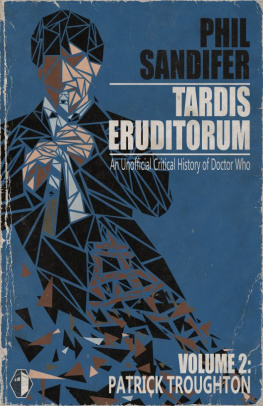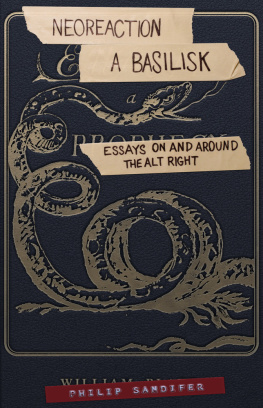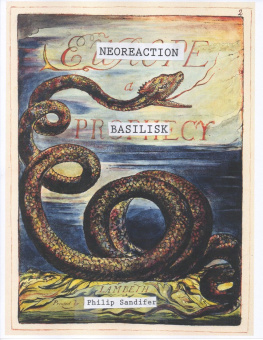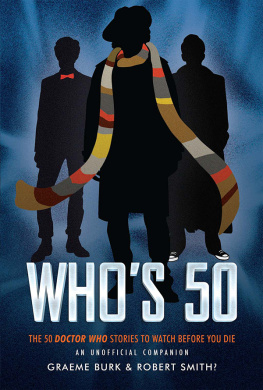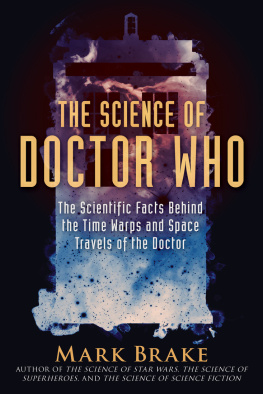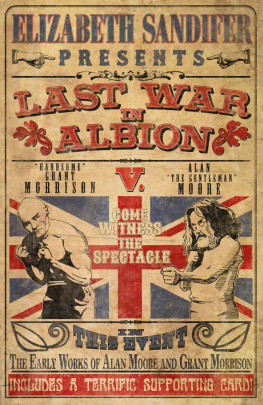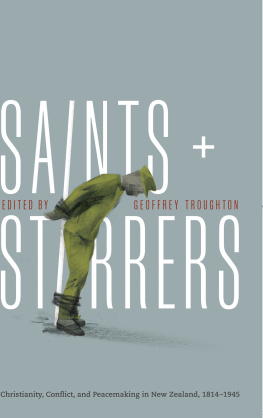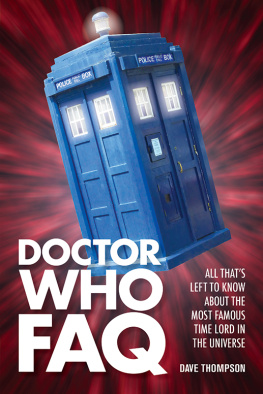TARDIS Eruditorum: An Unauthorized CriticalHistory of Doctor Who
Volume 2: Patrick Troughton
By Philip Sandifer
Copyright 2012, Philip Sandifer
Smashwords Edition
Smashwords LicenseStatement This ebook is licensed for yourpersonal enjoyment only. This ebook may not be re-sold or givenaway to other people. If you would like to share this book withanother person, please purchase an additional copy for each reader.If youre reading this book and did not purchase it, or it was notpurchased for your use only, then please return to Smashwords.comand purchase your own copy. Thank you for respecting the hard workof this author.
To Anna Wiggins, my dear friend and firstfan. Since I gave you no warning I was dedicating a book to you, Iimagine that you are blushing a lot while you read this.
Acknowledgements
Like a bad analogy, ittakes a number of people to make a book happen. This book would notexist were it not for the hard work of my editor, MillieHadziomerovic. Any words that are spelled correctly are down to herextensive work. The errors, on the other hand, are all me. Thanksare also due to James Taylor for his cover design. Those who areholding paper copies will be reassured to know that there will be asecond edition of the Hartnell volume with his art as soon as thefound episode of Galaxy Four comes out. While were being thankful, lets alsothank Jean Jannon, the sixteenth century printer whose work becamethe modern font Garamond, in which this book is typeset. But thatsjust me having a crush on a font.
More broadly, this book isa print collection of a blog of modest success. Its success comesfrom a fantastic community of readers whose lively discussions ofmy posts have motivated me through more than one day of not wantingto find another five hundred words to say about a given story. TheTroughton era was where that community really started to form, andwhere I began to reliably get comments on every entry. I look backon many of the entries in this book with delightedfondness.
Introduction
Why hello there! It lookslike you bought a copy of the second volume of TARDIS Eruditorum , which I, as thewriter, thank you for, because that probably means you have givenme money. (If you havent given me money and downloaded this offthe Internet, on the other hand, Im kind of upset with you.Seriously, 80% of this book is already up for free on the web andyoure stealing it? Im an underemployed PhD in English. That wasmy Ramen money you pirated! On the other hand, Im kind of pleasedto be important enough to pirate. So thats cool. Oh, all right. Iforgive you. Just buy the next volume, OK?)
In the event you have noidea what book youre holding, let me explain to you, generallyspeaking, how this book works. First of all, heres what it isnt:a standard issue guidebook to Doctor Who. Those looking for thenitty gritty facts of Doctor Who can probably get a decent sense ofthem by inference, but thats not what this book is for. There areno episode descriptions, cast lists, or lengthy discussions of thebehind the scenes workings of the show. There are dozens of booksthat already do that, and a fair number of online sites. Nor isthis a book of reviews. For those who want those things, Ipersonally recommend the Doctor WhoReference Guide , Doctor Who Ratings Guide , and A Brief History of Time (Travel) three superlative websites that were consultedfor basically every one of these essays.
What this book is is an attempt to tellthe story of Doctor Who. Not the story of how it was made, or theoverall narrative of the Doctors life, or anything like that, butthe story of the idea that is Doctor Who, in this book from PatrickTroughtons arrival in 1966 to his departure in 1969, but theresmore to come. Doctor Who is a rarity in the world an extremelylong-running serialized narrative. Even rarer, its an extremelylong-running serialized narrative that is not in a niche like soapoperas or superhero comics both provinces almost exclusively ofdie-hard fans. Doctor Who certainly has its die-hard fans (or, as Ilike to think of you, my target audience), but notably, its alsobeen, for much of its existence, absolutely mainstream familyentertainment for an entire country.
What this means is that the story of DoctorWho is, in one sense, the story of the world from 1963 on.Politics, music, technological and social development, and allmanner of other things have crossed paths with Doctor Who over thenearly fifty years of its existence, and by using Doctor Who as afocus, one can tell a story with far wider implications.
The approach I use to do this is one thatIve, rather pompously I suppose, dubbed psychochronography. Itdraws its name from the concept of psychogeography an artisticmovement created by Guy Debord in 1955 and described as the studyof the precise laws and specific effects of the geographicalenvironment, consciously organized or not, on the emotions andbehavior of individuals. More contemporarily, the term isassociated with writers like Iain Sinclair, who writes booksdescribing lengthy walking tours of London that fuse his experiencewith the history of the places he walks, weaving them into anarrative that tries to tell the entire story of a place, and AlanMoore, who does the same thing while worshiping a snake.
Psychochronography, then, attempts the samefeat by walking through time. Where walking through space involveslittle more than picking a direction and moving your feetrhythmically, walking through time without the aid of a TARDIS is adodgier proposition. The easiest way is to take a specific objectand trace its development through time, looking, as thepsychogeographers do, at history, lived experience, and the oddconnections that spring up.
And so this book is part of a walk throughDoctor Who. The essays within it wear a lot of hats, and switchthem rapidly. All involve a measure of critical reading (in theliterary theory sense, not in the complaining sense) of Doctor Whostories to figure out what they are about. This generally meanstrying to peel back the onion skins of fan history that cloud astory with things everybody knows. But it also involves lookingat the legacy of stories, which often means looking at that onionskin and trying to explain how it got there. No effort is made todisguise the fact that the first appearance of the Time Lords ismassive for instance, but on the other hand, the book still lookscarefully at what their initial impact might have been.
This approach also means looking at how astory would (and could) have been understood by a savvy viewer ofthe time, and at how the story can be read as responding to theconcerns of its time. That means that the essays tend to be long oncultural context. And, in the end, it also means looking at how Ipersonally interact with these stories. This book has no pretenseof objectivity. It is about my walking tour of Doctor Who. I try tobe accurate, but I also try to be me.
To fully grab the scope of the topic, inaddition to the meat of the book entries covering all of theDoctor Who stories produced with Patrick Troughton as the leadactor there are four other types of entries. The first are theTime Can Be Rewritten entries. One peculiar feature of Doctor Whois that its past is continually revisited. The bulk of these camein the form of novels written in the 90s and early 00s, but thereare other examples. At the time of writing, for instance, BigFinish puts out new stories every year featuring the first eightDoctors. These entries cover occasional highlights from theserevisitations, using them as clues to how these earlier eras arewidely understood.
The second are the Pop Between Realities,Home in Time for Tea entries, which look at popular media andculture to build context for understanding Doctor Who. Theseentries usually crop up prior to the bits of Doctor Who theyremost relevant for, and provide background and points of comparisonfor the show as it wrestles with the issues of its many times.
Next page
